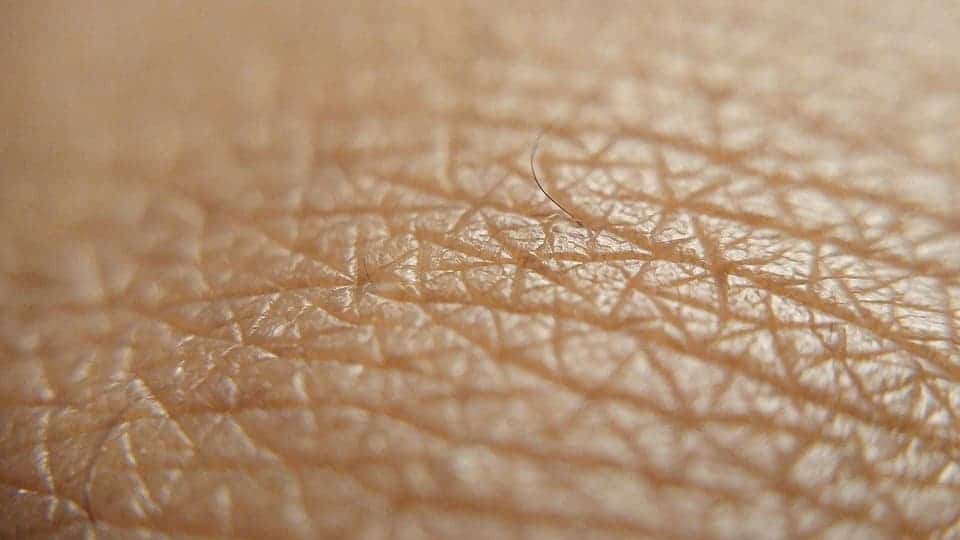A boy suffering from a disease which causes untreatable wounds over 80% of his body has been given a second chance at life. Doctors in Europe repaired and then replaced his skin with a new, disease-free version.

Hassan, who lives in Germany, suffers from junctional epidermolysis bullosa. This leaves his skin as fragile as butterfly wings, vulnerable to blistering and erosion. The prognosis was grim for Hassan — his chances of living were deemed slim at best. But a new therapy changed all that. Two years ago, doctors harvested samples from his skin, genetically modified them to repair the DNA and eliminate the disease, and then grafted this version back to the boy. Now, two years after the procedure, Hassan seems to be healthy. He is living a normal life, enjoying it as a kid should, his father says.
“Hassan feels like a normal person now, he plays, he’s being active, he’s enjoying his life and he’s not the way he was before,” he said.

Hassan was born in Syria. Ever since he was a few days old, he’s had blisters all over his body. His parents didn’t know what to do and treatment options were extremely limited. Finally, the family fled Syria and arrived in Germany. They checked in at Children’s Hospital at Ruhr-University, in Bochum, Germany, in June 2015. By then, Hassan was lacking 80% of his skin, his body turned into a big, red, blistering wound.
Doctors tried conventional treatments (like grafting skin from Hassan’s father), but that quickly failed. They resorted to palliative care and giving him morphine to ease the pain, and it seemed that was all they could do for the boy. Dr, Tobias Hirsch, from the hospital, said:
“We initially decided to provide palliative care because we had no chance to save the life of this child.”
But everything changed when a team of biologists specializing in gene therapy was brought in from the University of Modena and Reggio Emilia. As a last ditch resort, they wanted to try an experimental therapy. It’s not the first time something like this was attempted but it’s by far the most body surface was covered in a patient: 9 square feet (0.8 square meters) — almost his entire body.
The Italian team which led the procedure was led by Michele De Luca.
“This is the first time that such an amount of body has been transplanted,” said De Luca. “He basically lost almost completely his epidermis.”
The approach was successful thanks to the structure of the skin itself. Human skin contains its own specialized stem cells, which allow it to be renewed constantly throughout life. This also allows scientists to grow grafts in culture from small samples. Integration is also fairly easy. In Hassan’s case, it only took a month for Hassan’s body to renew and sustain the healthy skin.
However, he had to be put into an induced coma for more than four months to be spared from the excruciating pain.
“Once you have regenerated the epidermis, the stem cells keep making the renewal of the epidermis as in a normal [healthy person],” said De Luca. “All the data we have … are telling us that this is going to be a stable situation.”
This technique gives hope to thousands of people suffering from the same condition. About 25,000 people in the United States have it, and 500,000 worldwide, and there is no established cure for it. The degree of severity varies, but many of these people spend their entire life in severe pain. Some never live to reach adulthood. However, it’s not clear if the same approach can be used for all cases. Jouni Uitto, the chairman of the department of dermatology and cutaneous biology at the Sidney Kimmel Medical College at Thomas Jefferson University in Philadelphia also warns that epidermolysis bullosa sometimes affects internal structures, such as the lining of the esophagus and urinary tract, and gene therapy for skin cannot address these problems. But for people like Hassan, a treatment cand make all the difference in the world.
Journal Reference: Tobias Hirsch, Tobias Rothoeft, […]Michele De Luca. Regeneration of the entire human epidermis using transgenic stem cells. doi:10.1038/nature24487



